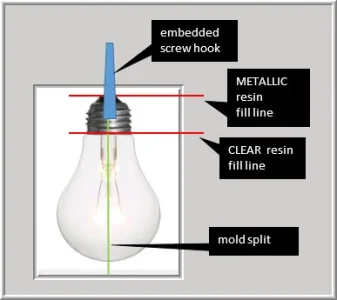Hello
I wish to get a master copy of my Light Bulb Wall Hook made on a lathe so I can make a mould of it and then replicate them easily to sell.
http://www.instructables.com/id/THE-ULTIMATE-LIGHT-BULB-WALL-HOOK/
Aluminum or metal, whatever is cheaper, easier, would leave the best finish. Once I have the master mould - I will then pour the epoxy into the mould, and viola - and easy and FAST way to make them.
I only need an inch or so of the anchor bolt, so when I have the mould ready - I just place the anchor bolt into the threads of the mould - then pour the epoxy. That way the anchor bolt will get locked into the epoxy.
Let me know if you have any questions.
I wish to get a master copy of my Light Bulb Wall Hook made on a lathe so I can make a mould of it and then replicate them easily to sell.
http://www.instructables.com/id/THE-ULTIMATE-LIGHT-BULB-WALL-HOOK/
Aluminum or metal, whatever is cheaper, easier, would leave the best finish. Once I have the master mould - I will then pour the epoxy into the mould, and viola - and easy and FAST way to make them.
I only need an inch or so of the anchor bolt, so when I have the mould ready - I just place the anchor bolt into the threads of the mould - then pour the epoxy. That way the anchor bolt will get locked into the epoxy.
Let me know if you have any questions.

